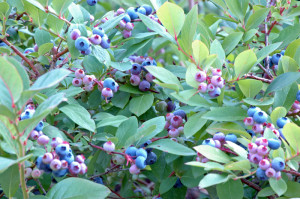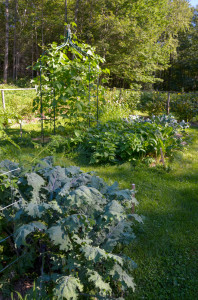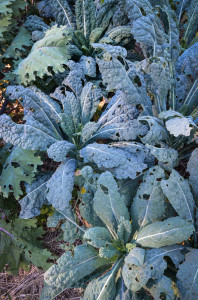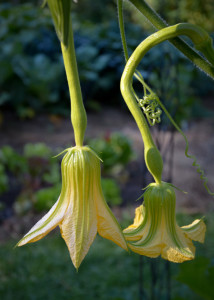Mellow Fruitfulness
September in Vermont! The world bids goodbye to summer and starts making its preparations for winter.
Many of our summer residents, from hawks to hummingbirds, not to mention the amazing monarch butterflies, are already departing for warmer climes.
The chickadees, who remain with us all winter long, have already put in an appearance at my kitchen window. This is where during the coldest weather I lay out a supply of sunflower seed for them, and even now, so many months later, they remember this is a good place to hang out for winter.
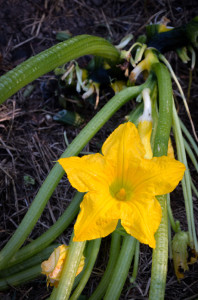 The flowers are abuzz with bees as they replenish their nectar supplies. And squirrels and chipmunks are stashing away seeds in the dark recesses of our woodpile. Will they ever remember, six months from now, where they hid their loot?
The flowers are abuzz with bees as they replenish their nectar supplies. And squirrels and chipmunks are stashing away seeds in the dark recesses of our woodpile. Will they ever remember, six months from now, where they hid their loot?
In our vegetable garden tomatoes are ripening beautifully, winter squash are filling out under a rampant blanket of leaves, and the kale is lush and full.
At summer draws to a close our garden produces far more than two people can possibly consume on a day-to-day basis. So now is the time to preserve the excess for the months ahead. It will taste all the more special when the snow is on the ground!
I have already dug and cured the garlic. After replanting 64 cloves to make next year’s crop, the remaining bulbs are set on a wire rack in the basement.
The winter squash also goes into a cool corner of the basement. I grow the Delicata and the Butternut varieties. Both roast well and become the basis of all sorts of winter specialties—just set the unpeeled squash halves with a little water in a shallow pan and cook at 375 ℉ until they are soft all through.
Butternut squash is also an excellent keeper and, since it easy to peel and cube, these big fruits feature in many wonderful winter soup recipes.
But, unlike winter squash, garlic and root vegetables, which can remain for several months in a cool basement, for long-term storage most of our harvest must be either canned or frozen.
I marvel at people who devote hot summer days to canning. But I am blessed with a freezer and I fill it well with both fruits and vegetables. These are some of my freezer favorites:
Black and Blue
Blackcurrants are a great source of vitamin C, so much so that ‘Ribena’ blackcurrant juice was a fixture of my English childhood.
Here in our Vermont garden we have 18 large blackcurrant bushes. The small fruit takes a lot of picking but this summer we managed to put away a dozen quarts of blackcurrant sauce in the freezer.
To make this sauce I simmer the cleaned blackcurrants with a little water for about 10 minutes. Then I add a pinch of baking soda to neutralize the acidity, and sweeten it with maple syrup.
The health benefits of blueberries are also renowned. And blueberries grow very well in Vermont with its generally acidic soil.
I have a dozen blueberry bushes growing in the center of my flower garden, where they are pleasant looking shrubs. Many of these bushes are sixty years old, planted by the family who lived here back around 1950.
Since we moved here in 1994 I have pruned them for carefully and removed the grass which was growing all through them.
Then just last fall I fertilized them liberally with composted coffee grounds, courtesy of our local coffee shop, Gourmet Provence in Brandon. Coffee grounds will boost the acidity of the soil, and certainly this year’s crop has been nothing short of spectacular.
Blueberries are delicious eaten fresh, but they are also cinch to prepare for the freezer. Just wash and drain the fruit, and store in large freezer bags.
Frozen blueberries can be added directly to pancakes and muffins. I also like to simmer the fruit for a short time to make a sauce for our evening yogurt.
Red and Yellow
I grow a lot of cherry tomatoes. They ripen almost a month earlier than the full sized ones—an important consideration for me given the short growing season at our altitude (1700’).
This year I grew a total of eight plants—-both red ‘Sweet 100’ and yellow ‘Sungold’, and now we are awash in ripe fruit.
I have discovered that roasting cherry tomatoes is not only really easy, but it also intensifies their sweetness. Lay the uncut cherry tomatoes in a single layer in a flat baking tray, coat them very lightly in olive oil, top with chopped garlic and rosemary and roast in a 375 ℉ oven for about 35 minutes.
Sprinkle the cooked tomatoes with Parmesan cheese for a delicious topping to pasta or quinoa. Freeze the excess in flat containers, and in midwinter they will taste like a breath of summer.
Green
We all know green vegetables are good for us!! The good news is that in Vermont—-where our summers are cool and the growing season relatively short—several green vegetables with high nutrition that also grow really well.
I grow these prolific Spanish Musica pole beans, from Renee’s Garden, on old arbor. I started picking their long flat meaty pods in late July and five weeks later I am still picking them.
The Swiss Chard and kale were also ready in July, about 2 months after I planted the seed in the ground. The chard will continue to grow until struck down by frost, the kale even longer.
And, unlike spinach, kale and chard do not bolt when the weather turns warmer.
All summer long I cut their leaves for stir-fries and the like.
I usually separate the chard stems so that I can cook them a bit longer than the leaves. And be sure to remove and discard the stems of the kale, as they have a tough texture resembling old bootlaces.
By September the plants of the beans, kale and chard are robust and full, and this is when I start my freezing regime.
Blanch before freezing
All green vegetables need to be blanched before freezing. Blanching cleanses the surfaces, stops enzyme actions and maintains the vitamin content.
After washing and preparing your veggies, drop them into a pot of boiling water and cook for the designated time. Then drain and dunk them in cold water, pat them dry and freeze in small quantities. Both will make great additions to sautéed vegetables and winter soups.
Signs of an organic garden
The kale on the right is lactino—one of three kinds I grew this year. Lactino kale cooks up quickly and has a nice soft texture—which is probably why it also gets nibbled by insects.
I still recall when we visited Bangkok a few years bac, as precursor to a cooking class we visited huge open air market. The young woman who was our guide specifically pointed out the vegetables with holes. She explained to us that most Thai people preferred over them over more perfect specimens, because the holes showed the vegetables were organic!!
How I wish we Americans could see things that way and lessen our demands for perfection in the produce section of the supermarket!!
The season of mellow fruitfulness
September is when summer comes to a close. The bees are preparing for winter, fruit is ripening on the vine, and the garden is fulfilled.
Like many of us, as a child I committed John Keats’ enduring poem ‘Ode to Autumn’ to memory. And though written in another time and another place, it still rings true today:
Season of mists and mellow fruitfulness,
Close bosom-friend of the maturing sun;
Conspiring with him how to load and bless
With fruit the vines that round the thatch-eves run;
To bend with apples the moss’d cottage-trees,
And fill all fruit with ripeness to the core;
To swell the gourd, and plump the hazel shells
With a sweet kernel; to set budding more,
And still more, later flowers for the bees,
Until they think warm days will never cease,
For Summer has o’er-brimm’d their clammy cells.


